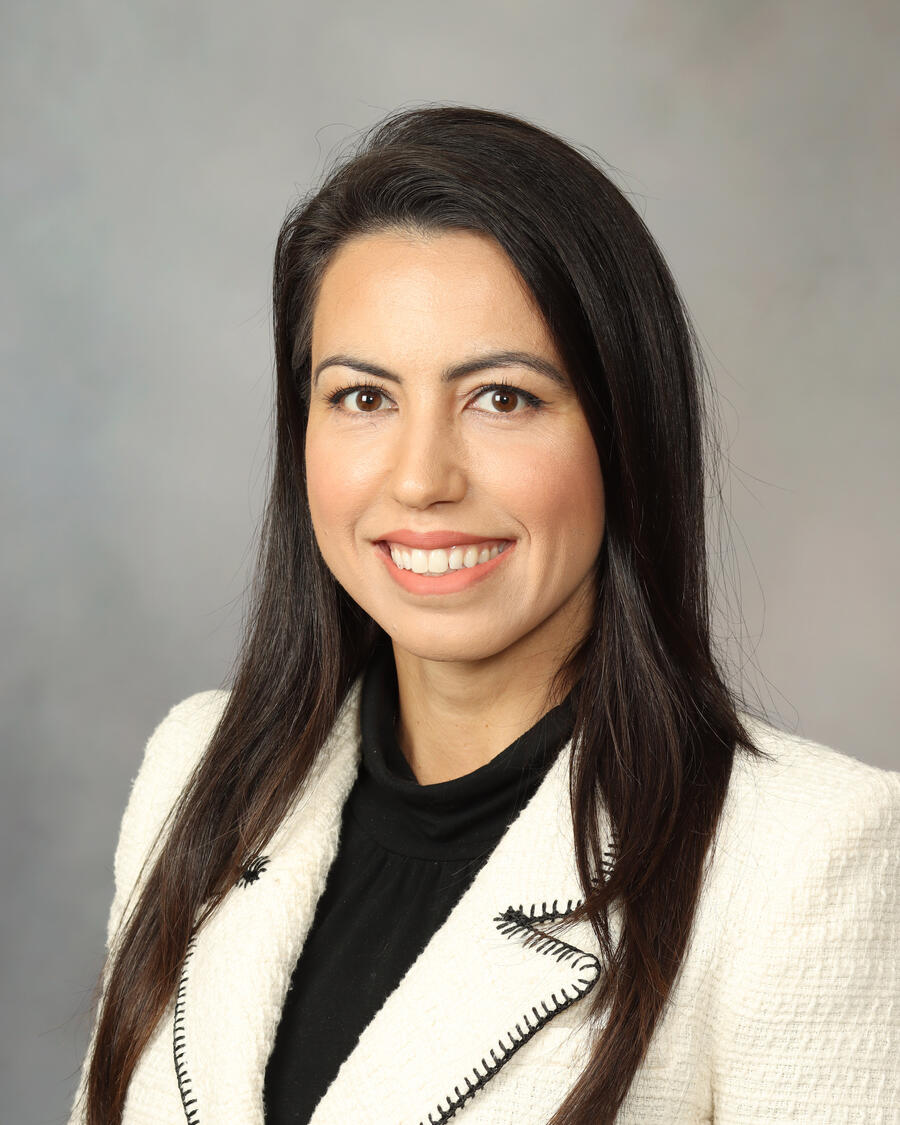Women Face Barriers in Accessing, Participating in Cardiac Rehab Despite Proven Benefits
For Immediate Release at 4:00 a.m. CT/5:00 a.m. ET Tuesday, Oct. 14, 2025
DALLAS - October 14, 2025 (NEWMEDIAWIRE) - People who participate in cardiac rehabilitation programs after a major cardiac event have improved quality of life and long-term cardiovascular health. However, significant differences exist in cardiac rehabilitation access, participation and outcomes for women compared to men, according to a new scientific statement published today in the American Heart Association’s flagship journal Circulation.

”Cardiac rehab helps people recover physically after a major heart event, while also empowering patients by supporting their emotional and social well-being throughout the recovery process,” said Chair of the scientific statement writing group Thais Coutinho, M.D., professor of medicine and director of the Aorta Clinic at the Mayo Clinic in Rochester, Minnesota. “By offering personalized care and support for women with heart disease, we can help improve their quality of life and reduce the risk of a future cardiac event.”
The new American Heart Association scientific statement, Cardiac Rehabilitation in Women, details these gaps and suggests evidence-based strategies to increase referral and completion rates for cardiac rehab programs among women with cardiovascular disease (CVD).
“There’s an urgent need to improve awareness about the benefits of cardiac rehabilitation, increase referral rates for women and eliminate the barriers that women face so they can participate and embrace the opportunity for longer, healthier, happier lives,” Coutinho said.
Scientific Statement highlights include:
- Cardiac rehabilitation is a proven intervention to improve cardiovascular health, offering benefits such as reduced hospital readmission rates, lower mortality rates and enhanced quality of life. Cardiac rehabilitation programs typically include aerobic exercise and strength training, nutrition counseling, weight management and CVD risk factor management.
- People who participate in cardiac rehabilitation experience improvements in CVD risk factors, including higher rates of tobacco cessation, greater reductions in blood pressure and cholesterol levels, and improvements in fasting glucose levels. Women who participate in cardiac rehabilitation programs experience greater reduction in mortality as compared to men.
- Despite the effectiveness of cardiac rehab, women are underrepresented in these programs. Women are less likely to be referred to cardiac rehab, and according to one study referral rates to cardiac rehab vary among adults of different racial and ethnic groups (48% for white women, 34% for Black women and 15% for Hispanic women). Overall enrollment rates for women are 36% lower than those for men. Women entering cardiac rehab tend to be older and to have more co-existing medical conditions, such as high blood pressure, high cholesterol, Type 2 diabetes and/or obesity, than men.
- Women are also affected by individual and societal factors that affect their ability to participate in or complete cardiac rehab programs, such as caregiving responsibilities, transportation challenges, scheduling conflicts, financial constraints (including lack of health insurance) and limited social support. Women from underrepresented racial or ethnic groups are more likely to cite cost (such as high copayments or transportation costs) as a barrier to cardiac rehab compared to white women.
- Addressing psychosocial well-being, including assessing participants’ psychosocial needs and providing referrals to therapists or counselors when appropriate, is an important component of cardiac rehab programs. Previous studies have found that women with CVD are more likely to experience depression, anxiety and psychosocial distress compared to men, which can contribute to worse cardiovascular outcomes.
- Women with a history of breast or gynecologic cancers often have elevated CVD risk, and certain cancer therapies have adverse cardiovascular effects that contribute to increased CVD risk during and after treatment. There is a need to educate both cardiac rehab health professionals as well as women with cancer and CVD about these risks.
- There are some cardiac rehab programs for women that include a broader range of exercise choices (such as dance, yoga or tai chi), provide greater social interaction and psychosocial support, and address insecurity concerns that women may have, such as feeling self-conscious about their appearance or physical abilities. However, the evidence is mixed whether programs tailored to women’s preferences are more effective than traditional programs that include both men and women.
- Increasing cardiac rehab referral, participation and completion rates among women can lead to improved cardiovascular health and quality of life for women with CVD. Suggested solutions include: increasing awareness of the benefits of cardiac rehabilitation programs; implementing automatic referral systems combined with case management to ensure all eligible women receive a referral; expanding access and addressing barriers to participation by offering flexible schedules and hybrid programs (in-person and virtual); and providing tailored support to meet women’s emotional, social and physical needs.
The new scientific statement was prepared by a volunteer writing group on behalf of the American Heart Association’s Exercise, Cardiac Rehabilitation, and Sports Cardiology Science Committee of the Council on Clinical Cardiology; the Women’s Health Science Committee of the Council on Clinical Cardiology and the Stroke Council; the Council on Cardiopulmonary, Critical Care, Perioperative and Resuscitation; the Council on Cardiovascular and Stroke Nursing; the Council on Lifestyle and Cardiometabolic Health; and the Council on Quality of Care and Outcomes Research. While scientific statements inform the development of guidelines, they do not make treatment recommendations. American Heart Association guidelines provide the Association’s official clinical practice recommendations. Authors of the scientific statement and their disclosures are listed in the manuscript.
The Association receives more than 85% of its revenue from sources other than corporations. These sources include contributions from individuals, foundations and estates, as well as investment earnings and revenue from the sale of our educational materials. Corporations (including pharmaceutical, device manufacturers and other companies) also make donations to the Association. The Association has strict policies to prevent any donations from influencing its science content and policy positions. Overall financial information is available here.
Additional Resources:
- Available multimedia is on right column of release link.
- After 5 a.m. ET, Oct. 14, 2025, view the manuscript online in Circulation.
- American Heart Association Scientific Statement news release: Psychological distress common after a heart attack, may lead to future heart conditions (Sept. 2025)
- American Heart Association news release: After cardiac event, people who regularly sit for too long had higher risk of another event (May 2025)
- American Heart Association news release: Walking, moving more may lower risk of cardiovascular death for women with cancer history (March 2025)
- American Heart Association/American College of Cardiology Guideline news release: ACC, AHA Issue New Acute Coronary Syndromes Guideline (Feb. 2025)
- American Heart Association health information: Life After a Heart Attack
- American Heart Association health information: Mental Health and Heart Health
- Follow AHA/ASA news on X @HeartNews
- Follow news from the AHA’s flagship journal Circulation @CircAHA
About the American Heart Association
The American Heart Association is a relentless force for a world of longer, healthier lives. Dedicated to ensuring equitable health in all communities, the organization has been a leading source of health information for more than one hundred years. Supported by more than 35 million volunteers globally, we fund groundbreaking research, advocate for the public’s health, and provide critical resources to save and improve lives affected by cardiovascular disease and stroke. By driving breakthroughs and implementing proven solutions in science, policy, and care, we work tirelessly to advance health and transform lives every day. Connect with us on heart.org, Facebook, X or by calling 1-800-AHA-USA1.
For Media Inquiries: 214-706-1173
Amanda Ebert: Amanda.Ebert@heart.org
For Public Inquiries: 1-800-AHA-USA1 (242-8721)
heart.org and stroke.org
View the original release on www.newmediawire.com
More News
View More




Recent Quotes
View More
Quotes delayed at least 20 minutes.
By accessing this page, you agree to the Privacy Policy and Terms Of Service.